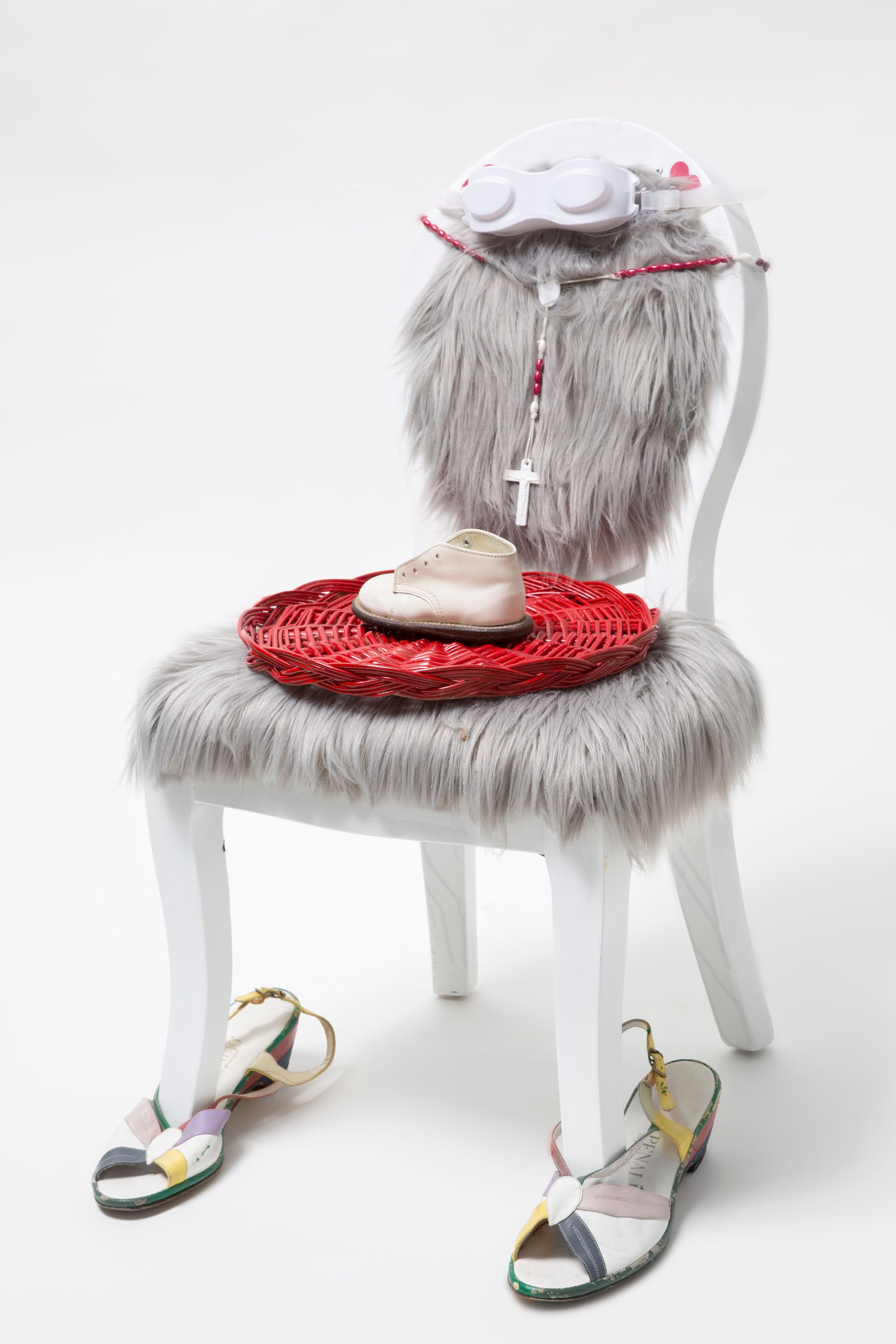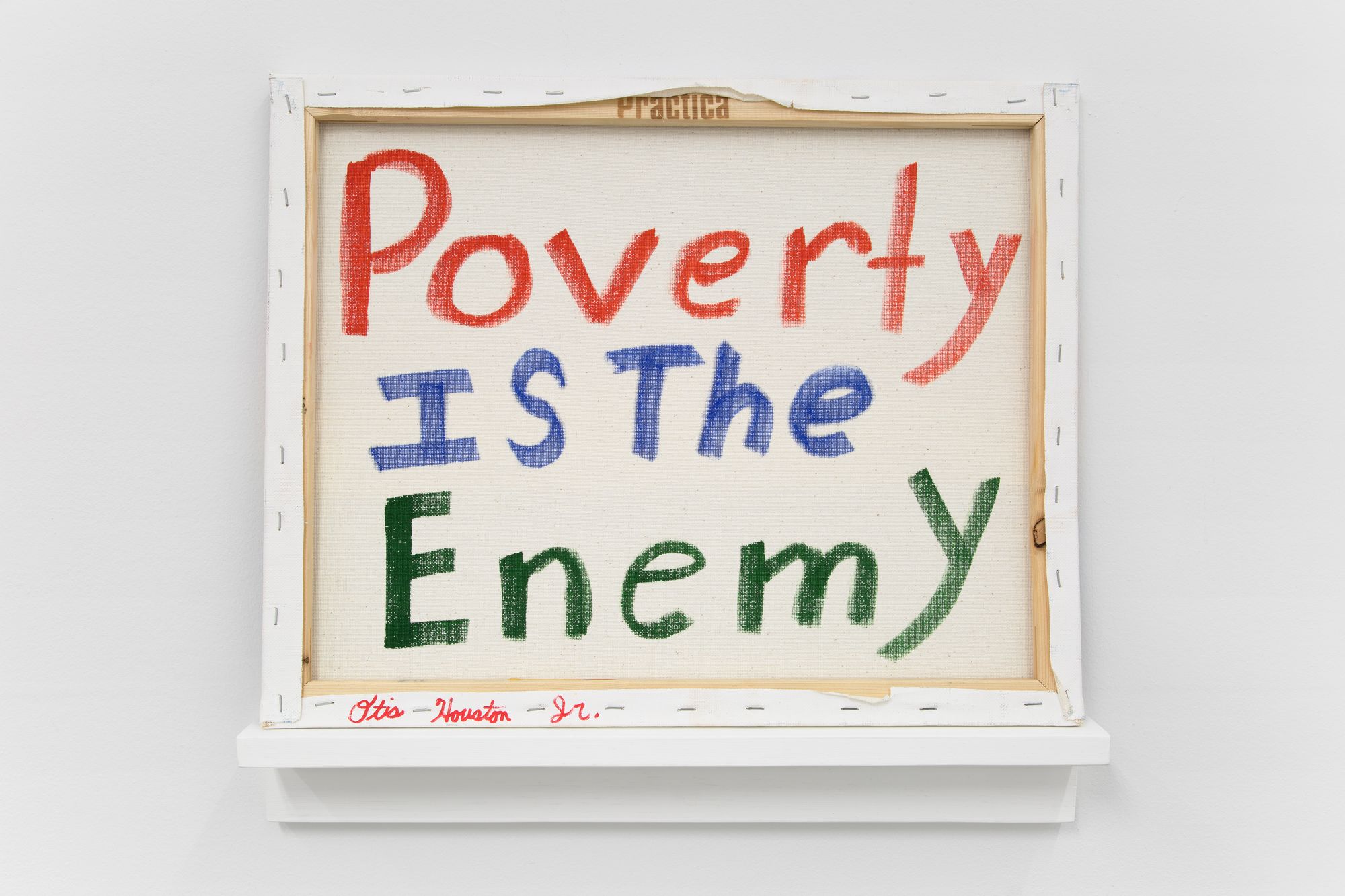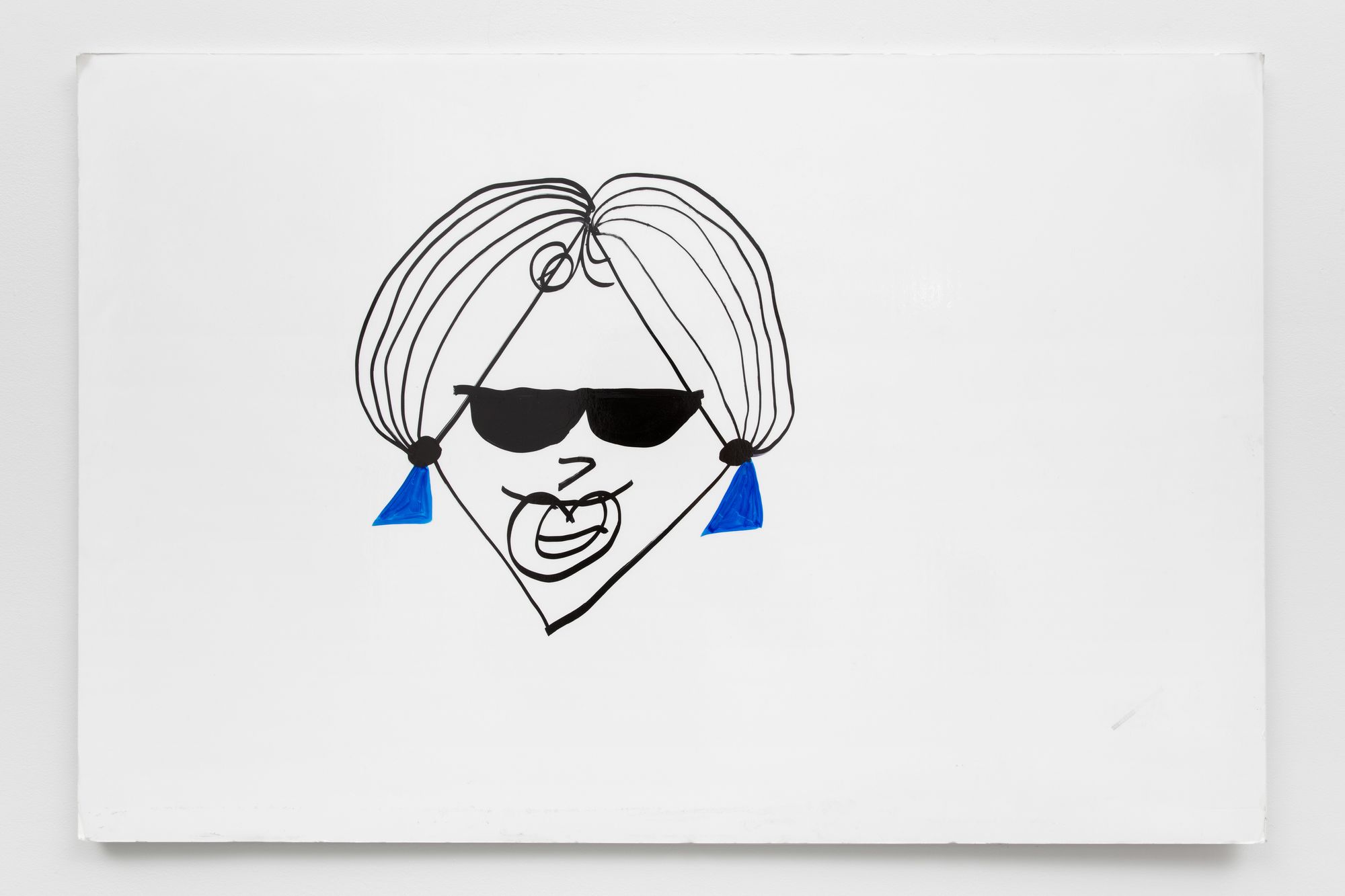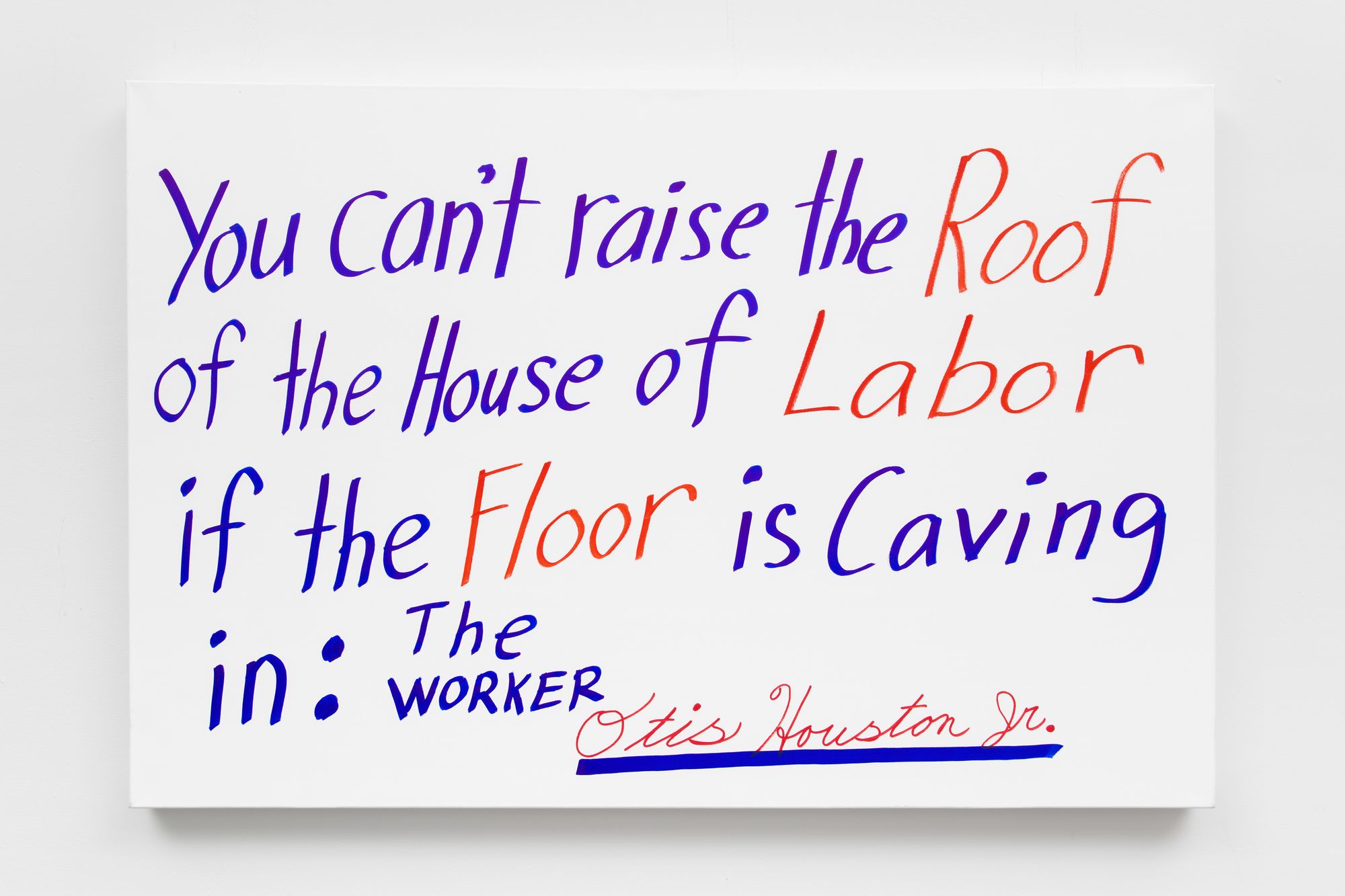
Past
Florence Derive, Otis Houston Jr.
The image Always Get the Last WORD: Otis Houston Jr. and Florence Derive
Nov. 11–Dec. 16, 2018
New York

Gordon Robichaux is pleased to present The image Always Get the Last WORD: Otis Houston Jr. and Florence Derive. The two-person exhibition, which takes its name and punctuation from an artwork by Houston Jr., comprises a group of Derive’s recent oil paintings and Houston Jr.’s sculptures, drawings, and paintings. The exhibition reveals points of unity and divergence: the artists’ shared interest in memory and biography, and their engagement with the performative possibilities of the body and language to create works that articulate identity, personhood, and presence.
The works of Otis Houston Jr., aka “Black Cherokee,” are primarily made with discarded objects he collects from the street and the dumpster at his job. Created in his Harlem apartment in the Taino Towers housing project where he has lived for the past thirty years, and in the basement of the office building where he works in Midtown Manhattan, these artworks are informed by his perennial practice: an ongoing site-specific installation where he performs on the side of the FDR Drive. Over the years, he has come to occupy and claim this marginalized stretch of highway as a gallery, studio, and forum. Since 1997, following a period of incarceration and his mother’s death, Houston Jr. has returned weekly to his self-anointed soapbox under the Triborough Bridge, where he stages impromptu performances and displays an arrangement of signage, drawings, and found-object assemblages that critique racism, poverty, and addiction, and celebrate health, education, happiness, and freedom. As he says, “We not in the same boat, but we all in the water.”
Like Houston Jr.’s persistent return to his spot on the highway, his declarative banners and anthropogenic sculptures insist on presence and liberation, actively working against erasure, inertia, and silence as well as frequent harassment by the police: “Where performance art goes from here is only a matter of imagination. In other words, there are no foreseeable boundaries for performance art.” The drawn text on his placards, banners, and found paintings are playful and pointed epigrams, concrete poetry, and activist calls—“Black Trash,” “Poverty is the Enemy”—distilling social issues into word-forms and text-shapes that evershift with meaning, visual power, art, and politics. His works made with found objects—a chair adorned with faux fur; his deceased mother’s shoes and rosary; and his son’s baby shoe; a coat stand with expressive, wonky wires and the artist’s orange apron; a worn piece of foam core inscribed with his treatise on performance art—stand in for the body, referring back to his use of his own physicality in the highway performances. They also emphasize Houston Jr.’s democratic approach to artmaking: his use of direct address, discarded objects, fruits and vegetables from his fridge, paperbacks from his personal library, and flowers from the corner store—all of it an insistence that the artist “use what he’s got.” Quoting Malcolm X when speaking about how and why he makes art, he explains: “All of our experiences fuse into our personality. Everything that ever happened to us is an ingredient.”
Florence Derive works from what she terms a “memory library” of “younger days,” in which “forms, colors, music, scents” and “lights from the skies and the city” pool into her lush paintings. A quintessential demimondaine, muse, and fixture of Parisian nightlife and culture, she was a frequenter of the famed club Le Palace and Paris’s luminary creative scene, developing friendships with Betty Catroux, Kenzo, Yves Saint Laurent, Pierre Bergé, Keith Haring, Klaus Nomi, and Pierre et Gilles, who photographed Derive for their artwork. These experiences, in addition to her life as a trans woman; her undergraduate study of science and color theory; her time teaching textile design, and her ongoing career as a decorative painter, producing commissioned wall paintings for celebrated interior designer Albert Pinto, comprise her sensuous palette, worldview, and way of working.
Through tactile processes, Derive creates works that emphasize the intimacy of surface and the body. The paintings presented here—from her ongoing series, Letters and Notes to an Improbable Lover—are epistolary poems and meditations on romanticism, beauty, nature, mortality, longing, and desire. The works feature calligraphic imagery inspired by medieval illuminated manuscripts, where a text is highlighted with flourishes of vegetation, decorative motifs, and images that expand the reader’s experience and understanding of the text itself. Derive paints the black calligraphic marks with the immediacy of a crude printing process: She uses her finger to draw with paint onto the surface of a piece of glass that she then presses upon fields of lush, saturated color. The black, rhythmic marks map the process of creation, making visible the activity of writing and its translation onto the surface of the linen, as they zigzag like a fertile vine or tracery in a Gothic stained-glass window.
Present in the work is a theatrical and a heightened sensitivity to the beauty of the natural world: Letter to Capucine conjures the radiance of the orange capucine flower (“nasturtium” in English) and the French model and actress Derive met in Geneva before she took her life; Palpitations unites anatomy and desire and suggests the pulses of a beating heart; June and September make reference to the seasons and cycle of life; and Blue Manuscript, a scroll-like painting on a vertical rectangle of unstretched linen with glyphs set against blocks of primary colors, acts as a mysterious index that evokes a mystical, modernist text. Throughout, Derive displays a reverence for the feminine—notions of a queer, femme way of looking at the world. These creations are themselves small acts of freedom. In Derive’s words, “The act of painting is an act of liberation [and] creation and gives life to an image that when observed reminds the viewer of something equivalent buried deep within herself.”
—Svetlana Kitto
Install (9)






Works

Otis Houston Jr., Peace
Otis Houston Jr., Peace
Marker on found object
80 x 27.75 x 1.25 inches
2018

Otis Houston Jr., Mind (view a)
Otis Houston Jr., Mind (view a)
Marker, pen, and colored pencil on paper; tape, spray paint, and marker on found board
18 x 12 inches
2018

Florence Derive, Letter with Capucine
Florence Derive, Letter with Capucine
Oil on linen
36 x 52.75 inches
2017

Otis Houston Jr., Mother Sadie
Otis Houston Jr., Mother Sadie
Mixed media (found and altered objects)
27 x 16 x 28 inches
2018

Otis Houston Jr., The Man
Otis Houston Jr., The Man
Mixed media (found and altered objects)
68 x 15 x 15 inches
2018

Otis Houston Jr., Performance
Otis Houston Jr., Performance
Marker and tape on found board
46 x 26 inches
2016
Projects

Performance
Performance























